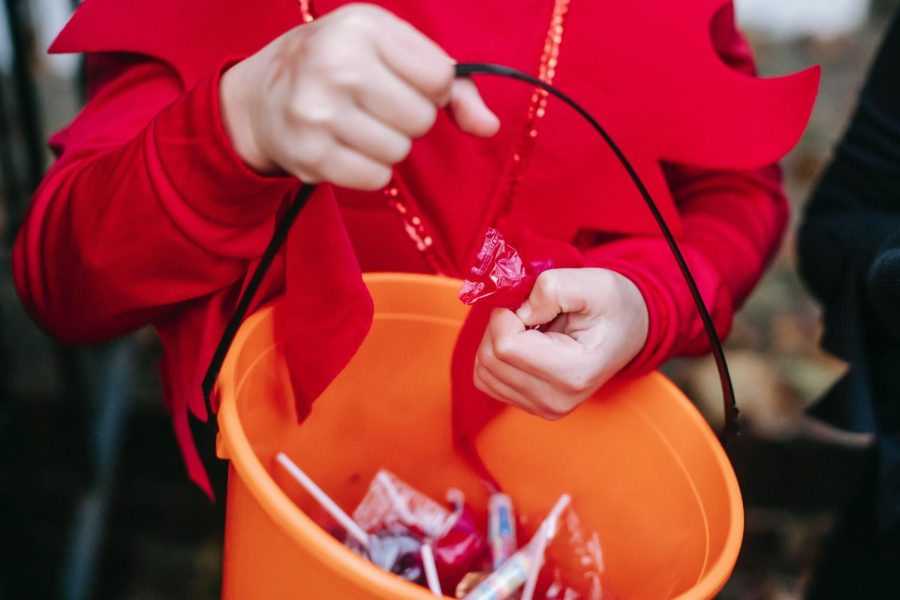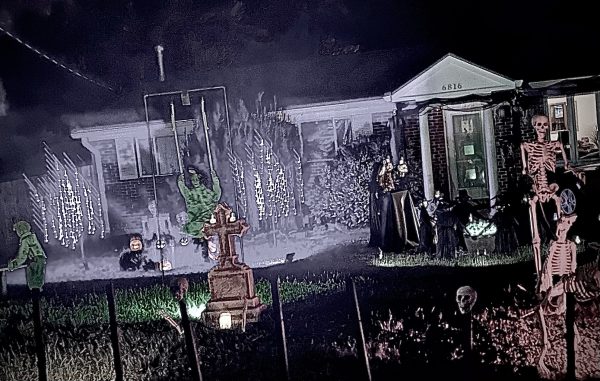How Old is Too Old to Trick-or-Treat?
Halloween traditions include carving pumpkins, making spooky treats, and watching scary movies, but according to How Stuff Works, “Wearing Halloween costumes and trick-or-treating are the most popular American Halloween traditions.”
Every year, hundreds of children go out on the streets in costumes, ringing doorbells and requesting candy. People can trick or treat at any age, but it’s most commonly associated with kids.
According to Time Magazine’s 2017 article “How Old Is Too Old to Trick-Or-Treat on Halloween,” most people stop trick-or-treating around the ages of 12 to 16, but you don’t have to stop then.
“I think the last time I really went out (I’m kind of embarrassed to tell you this, but I will tell you nonetheless), I think I was 18,” said history teacher and mom Stephanie Haley. “One of my friends had younger siblings, and we went out with them, but we dressed up too, and we totally took candy, even though we were, like, full-on adults. I mean, I wasn’t even in high school.”
Seventh grader Ella Lewyn plans to trick-or-treat this year and also plans to go with friends.
“I think you should be able to do it as long as you want because it doesn’t matter how old you are; you can still enjoy getting candy and seeing your friends.”
In some places, however, they take the age of trick-or-treaters very seriously, according to a 2019 article in the New York Times entitled “Is 15 Too Old to Trick-or-Treat? One City Said Yes.” In Chesapeake, Virginia, trick-or-treating is banned over the age of 14.
Amusingly, the law, which took effect in 2019, extended the age to 14 from 12, which had been on the books since 1970 after some shenanigans by older trick-or-treaters resulted in some injuries. They got a lot of backlash in the age of the internet, but mostly from people who didn’t live there.
The law, as of the article’s writing, had never been enforced, and there is no punishment anymore, and the law was mostly there to keep people safe.
Love to Know, an online publication and information source, said that a lot of people feel that it’s ok to trick or treat until they are at least 13, and after that, it gets more complex, as that is where laws and ordinances come into the picture.
“An informal poll of nearly 3,000 readers by the Today Show indicated that 76 percent of people do not think there should be an age limit for trick-or-treating,” their article, “How Old Is Too Old to Trick-or-Treat? General Guidelines,” reported. “Still, there’s a big gray area between age 12, when going door to door for candy is usually acceptable, and 21, when a person is considered an adult in almost every way.”
Perhaps their most important point, it’s all about manners. The reason for most bans has more to do with unruly behavior by teens and not a moral judgment about having fun and getting candy.
“Kids who engage with adults, don’t snatch candy, and say ‘thank you’ are usually welcome at any age,” the story said.
One thing teens need to keep in mind to avoid trouble is which houses to go to. If their lights are out, don’t go there, reported CNN in their “Guide to Halloween trick-or-treating etiquette.” pointing out that the person inside might be asleep (or “just avoiding candy duty.”)
If candy isn’t someone’s thing, there’s always pumpkin carving! According to Arizona Pumpkin Patch, the “Captain Jack pumpkins” are the best and most popular carving pumpkins, with their flat bottoms allowing them to stand.
Whether trick-or-treaters are staying home to give out candy or going out and asking for it, USA Today reported that Reese’s peanut butter cups are America’s favorite! This information came from a bulk order candy supplier, who analyzed their data to determine the top 10.
Trick-or-treating doesn’t officially have an age limit. People can go at any age as long as they’re kind and polite. Just remember, the Lancer code applies when trick-or-treating too. Be respectful, responsible, and safe.












